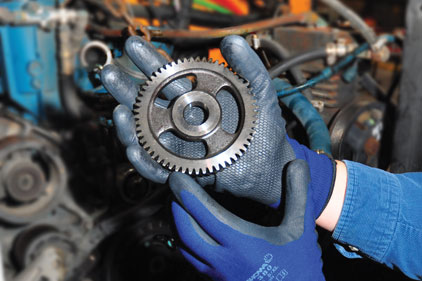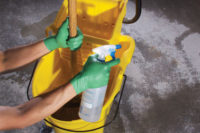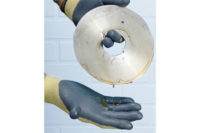The definition of value in terms of hand protection is not altogether different, but worthy of some examination.
To choose the proper personal protective equipment (PPE) in terms of hand protection, one must begin with defining need, choosing a high-quality product with longevity, performance, comfort and fit, and of course, choosing products that will save cost and provide value to the plant/company over the long-term. However, this isn’t quite as simple as browsing prices in a department store.
Risk vs. consequence
Proper hand protection value starts with examining metrics over a company’s entire hand protection portfolio and determining: What is the cost of choosing the proper product for the application versus the cost of offering generalized products that may save the company long-term?
In effect, this creates the situation for more potential employee harm. The real question should be: What is the cost to our company in choosing the incorrect product for its employees, on its bottom line and on its reputation? To further this metaphor, you do not want to choose a cheap jacket that will not only tarnish your reputation, but you’d need to repurchase in three months.
Defining value in terms of PPE is often a measure of risk versus consequence. Today’s economic environment is causing companies to further examine ways in which to cut costs, and PPE is often the first target because of the proliferation of so many “me-too” products in the market to choose from. There are often very important operational and economical impacts of these very critical purchasing choices, and the data needed to make these decisions should be at the ready and understood.
Consider this statistic: Hand injuries are the #2 leading cause of work-related injury and the most preventable. As a real world example, on average a U.S. automotive worker earns $33.00/hr and the average reported hand injury results in six days off work. Result: a minimum $1,500 plus medical costs, lost time, workers’ compensation claims, and potentially legal costs. Multiply this by countless thousands at potential risk, and it becomes very clear what the real value of proper hand protection looks like.
Cost advantages of quality hand protection
Many hand protection manufacturers have examined ways to prove the long-term value of a well-balanced, well-matched portfolio of products that matches the proper gloves to the application for the buyer. In doing so, programs have been created that intend to assess and identify potential cost “drivers” for buyers — exposing ways in which to eliminate cost while at the same time keep overall employee safety high and reduce injuries. Important cost drivers are uncovered which tell the tale of long-term hand protection “value”:
Let’s examine some of the more generic key cost “drivers.”
1. Adopting new technology: Higher quality, slightly more expensive gloves may offer long-term cost savings since discarding the gloves will happen much less frequently. Through an assessment, proper products are matched to workplace environments, eliminating wasteful operational habits. Additionally, many products are recyclable or launder-able — another way to increase value and cost savings long-term once programs are adopted.
2. Reducing Redundant SKUs: The removal of obsolete and/or redundant products on a regular (or quarterly) basis allows for newer, more enhanced products to be continually available. This results in reduced carrying costs and a more streamlined and efficient inventory.
3. Consolidating Products / Standardization: Products and applications need to be continually reviewed and assessed, then matched with standardized products that may be able to handle multiple tasks. This typically stems from a product/application audit on-site. These practices ensure optimal product selection across like jobs and applications.
4. Improving the Safety of Your Workplace by Satisfying OSHA Requirements / Injury Prevention: Workers often do not wear PPE or have the wrong product for the task. It’s simple: Injury prevention is critical to reducing medical costs, lost time and workers’ compensation claims. Maintaining OSHA regulatory compliance isn’t only a mandate, it should be ingrained in the company culture. The cost implication of this practice is crucial to ensuring long-term product value.
5. Adopting Tight Controls and Best Practices for Use: Understand the reasoning behind the timing for proper replacement of current gloves in the portfolio, and benchmark the amount of gloves used by employees each day/hour. Understanding timing best practices will eliminate waste and cost. In addition and just as important, how and when to properly dispose of PPE in plants and facilities is critical as well. Usage trends, recycling volume, and monitoring of overall consumption of gloves and laundry cycles provides more insight and another way companies can save money with an informed and controlled plan based on valuable metrics.
6. Training: Lastly and very importantly, properly training end users how and when to make proper hand protection choices decreases risk of injury, provides greater comfort (fit and feel), maintains worker compliance, and ensures efficiency since fewer PPE products are used over time due to higher durability. Taken from reliableplant.com, “Employee training impacts a company’s bottom line by reducing the costs associated with workplace injuries. The comprehensive cost of an injury is much more expensive than the initial medical treatment. Productivity, employee morale, and public opinion all take a hit when severe injuries are reported. Training programs not only have the potential to reduce the direct costs associated with injuries but they can improve productivity by minimizing worker and process downtime.”1
Justify your purchasing decision
The value of hand protection is magnified through working with reputable, global manufacturers/distributors who will offer the best possible quality products for the cost. These quality products often last two to three times longer than cheaper products — as many case studies will suggest. It’s a common misconception that the least expensive glove saves cost. The cheaper route in the long-term proves to be the product that offers the least amount of value.
Making the right PPE purchasing decision should be the outcome of contemplating, comparing and assessing valuable data and metrics to determine the true value of the products. Without this information at the ready, one heads into these critical decisions entirely blind, without justification for the choices made, or the products chosen.
End users are owed much more than this, as is the company itself.
Reference
1. http://www.reliableplant.com/Read/7230/ppe-cost-performance


